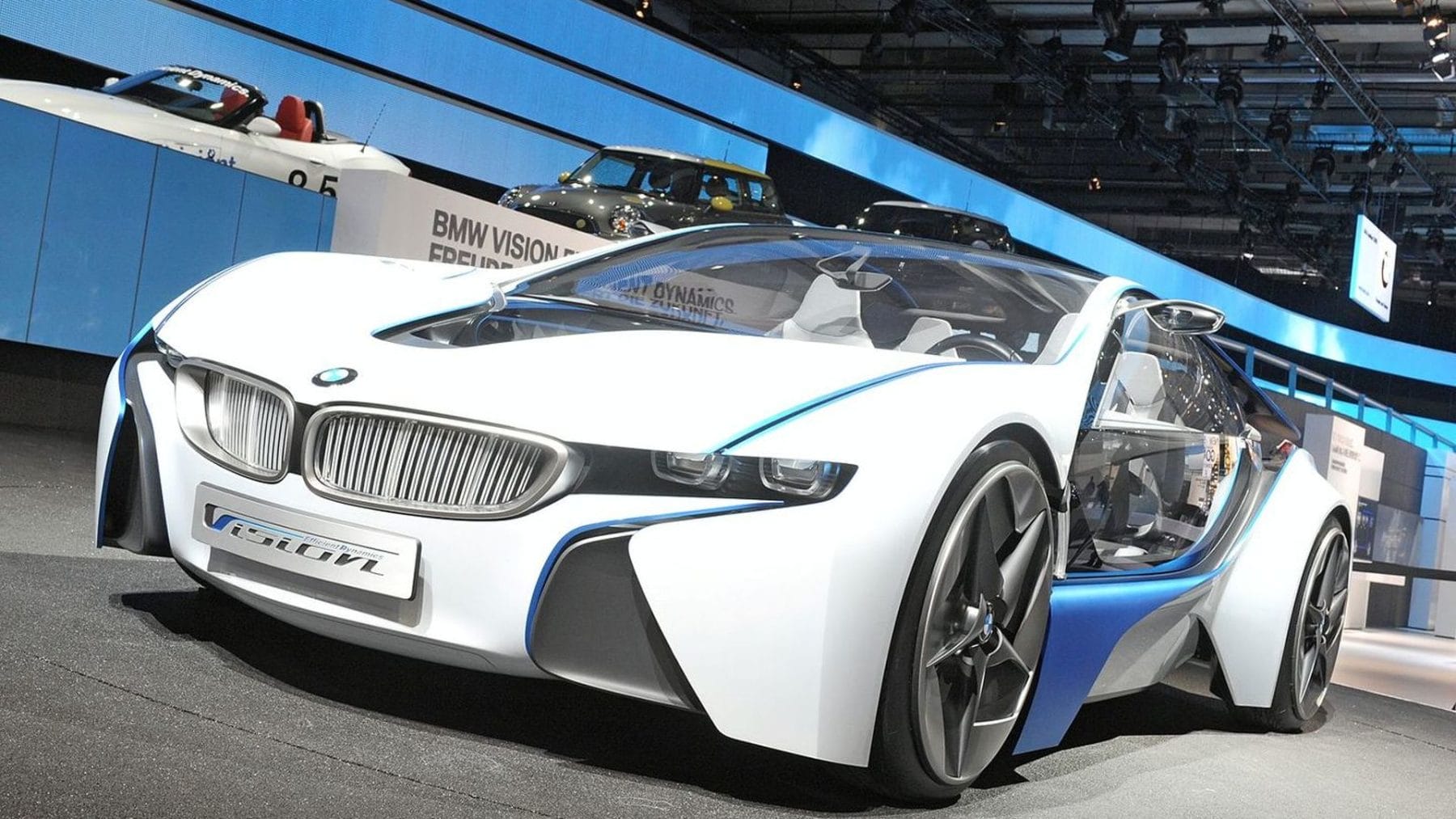Concept cars have long been a way for automotive manufacturers to stretch the boundaries of design and technology, testing bold ideas before bringing them into production.
Or sometimes simply showcasing visions of the future. Few brands have done this with as much style and influence as BMW.
The German automaker has consistently delivered daring prototypes that not only hint at what’s to come but also influence the direction of the wider industry.
For car enthusiasts and collectors, concept vehicles often serve as a reminder of BMW’s innovative spirit—balancing tradition, performance, and progressive design. While everyday drivers rely on trusted BM Spares car part suppliers to keep their vehicles running smoothly, the world of concept cars allows us to glimpse the future of the marque. Let’s take a look back at some of BMW’s most memorable concept cars, spanning decades of experimentation and inspiration.
BMW Turbo (1972) – A Bold Vision of Safety and Speed
The BMW Turbo, unveiled at the 1972 Munich Olympics, remains one of the most striking concept cars in automotive history. Designed by Paul Bracq, the Turbo showcased cutting-edge ideas for safety, aerodynamics, and driver protection. It introduced crumple zones, a collapsible steering column, and advanced seatbelt systems—features that have since become standard in modern vehicles.
But beyond safety, the Turbo was visually breathtaking. With its gullwing-style doors, wedge-shaped profile, and signature BMW kidney grilles, the car looked like something out of science fiction. Under the bonnet, it featured a turbocharged 2.0-litre engine producing 206 horsepower, giving it plenty of performance for its era.
Although the Turbo never reached production, its influence lived on in the legendary BMW M1 supercar, which debuted just a few years later.
BMW Z1 (1987) – Quirky Innovation for Everyday Drivers
The late 1980s brought the BMW Z1, a concept-turned-production roadster that blurred the line between experimental and practical design. The Z1’s most notable feature was its retractable doors, which slid down into the body rather than swinging out. This quirky innovation made parking in tight spaces easier while giving the car a futuristic flair.
The Z1 also showcased BMW’s interest in modular construction. Panels could be removed and replaced with relative ease, hinting at a more customisable future for cars. While only around 8,000 Z1s were produced, the car left a lasting impression and paved the way for BMW’s future Z-line roadsters, including the beloved Z3 and Z4.
BMW Nazca C2 (1992) – A Rare Collaboration with Italdesign
The early 1990s saw BMW partner with the famed Italian design house Italdesign, led by Giorgetto Giugiaro, to produce the BMW Nazca C2. Sleek, aggressive, and undeniably exotic, the Nazca was more supercar than traditional BMW.
It was powered by a 5.0-litre V12 engine and featured a lightweight carbon-fibre body, a material that was still considered experimental at the time. The car also had a canopy-style cockpit reminiscent of fighter jets, cementing its place as one of the most dramatic concepts BMW has ever unveiled.
Although the Nazca never made it to production, it remains a cult favourite among enthusiasts and collectors, symbolising BMW’s willingness to experiment with radical designs.
BMW Z9 Gran Turismo (1999) – A Glimpse into BMW’s Luxury Future
At the turn of the millennium, BMW introduced the Z9 Gran Turismo, a concept that would shape the brand’s luxury and technology design language for years to come. Designed by Chris Bangle, the Z9 featured bold proportions and a striking silhouette, with a long bonnet and sweeping roofline.
The interior was equally forward-thinking, showcasing a central control system that would eventually evolve into BMW’s iDrive. At the time, the idea of consolidating vehicle functions into a single interface was revolutionary. Today, it is a standard feature across the automotive industry.
Elements of the Z9’s design directly influenced the BMW 6 Series of the mid-2000s, making this concept not only memorable but also highly impactful.
BMW Gina Light Visionary Model (2008) – Concept cars That Changed Shape
Perhaps the most unusual concept BMW has ever produced, the Gina Light Visionary Model stunned the world with its unconventional design. Instead of traditional body panels, the Gina used a flexible fabric stretched over a movable frame. This allowed the car to change its shape at the push of a button.
For example, the headlights could remain hidden until “opened” through the fabric, and even the overall body could adjust its curves and contours. The Gina wasn’t just a car—it was a statement about creativity, adaptability, and thinking beyond traditional automotive norms.
While the Gina was never meant for production, it sparked global conversation about design freedom and how form and function could coexist in unexpected ways.
BMW Vision EfficientDynamics (2009) – The Birth of the i8
BMW’s Vision EfficientDynamics concept, unveiled at the 2009 Frankfurt Motor Show, was the foundation for one of the brand’s most iconic modern vehicles: the BMW i8. Combining futuristic looks with hybrid technology, the concept emphasised both performance and sustainability.
Its plug-in hybrid powertrain paired a turbo-diesel engine with two electric motors, demonstrating BMW’s commitment to efficiency without sacrificing driving pleasure. The striking design, with its scissor doors and flowing aerodynamic body, captured global attention.
When the BMW i8 reached production in 2014, it retained much of the concept’s daring design and became a symbol of forward-thinking luxury sports cars.
BMW Vision Next 100 (2016) – A Century of Innovation
To celebrate its 100th anniversary, BMW revealed the Vision Next 100—a concept that encapsulated the brand’s view of the future of driving. Combining artificial intelligence, autonomous driving, and augmented reality, the Vision Next 100 was less about traditional mechanics and more about how humans and machines could interact.
The car featured a “Boost” mode for driver control and an “Ease” mode for autonomous driving, with interior surfaces that adapted depending on the mode. The exterior showcased dynamic, shape-shifting bodywork, echoing ideas first seen in the Gina concept.
This futuristic prototype highlighted BMW’s commitment to innovation and positioned the brand as a leader in the ongoing shift toward electrification and smart mobility.
Why Concept Cars Matter
Concept cars aren’t just about showcasing wild ideas; they often serve as a testbed for technologies that later become everyday features. From the Turbo’s pioneering safety features to the Vision EfficientDynamics’ hybrid technology, BMW concepts have consistently pushed boundaries while influencing production vehicles.
They also reinforce BMW’s reputation for blending performance, luxury, and innovation. While most drivers focus on reliability and maintenance, the brand’s experimental side reminds us that driving is also about passion, excitement, and imagination.
BMW’s most memorable concept cars reveal a fascinating journey through decades of innovation
Some, like the Turbo and Vision EfficientDynamics, directly shaped production models. Others, such as the Gina, remain experimental works of art that challenged conventional thinking. What unites them all is BMW’s dedication to pushing the limits of design and technology. These concepts remind us that the cars we drive today are the result of bold ideas dreamt up decades earlier. Looking ahead, it’s safe to say that BMW’s future concepts will continue to inspire, surprise, and redefine what’s possible on the road.







